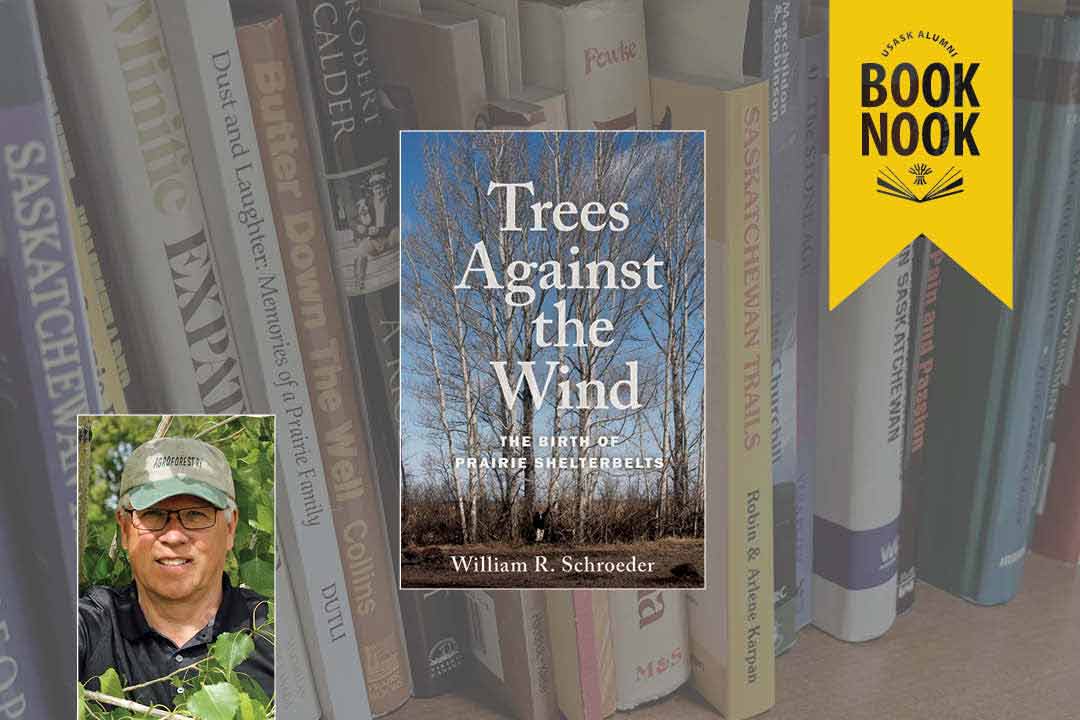
Alumni Book Nook: William R. Schroeder (BSA’76, MSc’83)
Scientist and entrepreneur William R. Schroeder is the author of "Trees Against the Wind: The Birth of Prairie Shelterbelts"
University of Saskatchewan (USask) graduate William R. Schroeder (BSA’76, MSc’83) is the author of Trees Against the Wind: The Birth of Prairie Shelterbelts, a new publication from Nature Saskatchewan that was released in September 2023. It follows his previous book, The Trees of Indian Head, which was published in 2019.
Schroeder, who lives in Regina, studied in USask’s College of Agriculture and Bioresources and earned two degrees: A Bachelor of Science degree in agriculture in 1976 and a Master of Science degree in horticulture in 1983. He is the founder of GreenTree Agroforestry Solutions, a Regina-based company that provides professional agroforestry and tree-related consulting services.
What have you been doing since you graduated from USask?
For 35 years I was a biologist and scientist with the Agriculture and Agri-Food Canada Agroforestry Development Centre at Indian Head, Saskatchewan. I retired in 2016 and formed the company GreenTree Agroforestry Solutions, where I help farmers with their tree problems, collect tree seeds, and write books.
What is the focus of your new book?
Trees Against the Wind brings to life the inspiration, the people, the science, the business, and the politics behind prairie shelterbelts. This history is a tribute to the thousands of innovative prairie farmers who planted trees to shelter their homes and land, and to Norman M. Ross, chief of the tree planters, who, from 1901 to 1941, shaped, promoted, and fought for the program that ultimately distributed over 600 million trees to Western Canadian farmers.
What inspired you to write this book?
I talk with farmers about trees almost every day. They treasure and appreciate the trees they or their ancestors planted. What I found interesting is that they may not remember exactly what crop they planted 20 years ago, but they almost always remember—in detail—planting their trees, the date, the weather, and how fast or slow they grew. The Indian Head Forest Nursery no longer exists, but many of the millions of trees grown and distributed by the nursery remain. I felt compelled to tell the story of how trees became a part of the prairie landscape.
Did your education at USask play a role in researching and/or writing this book? If so, how?
Definitely. That is where I was trained to conduct critical research and learned to appreciate history and the important role of trees in agroecosystems.
What are five adjectives that you would use to describe your book?
Enlightening, informative, unique, engaging, and educational.
Why would you recommend your book to USask alumni?
You may think of planted shelterbelts as a response to the prolonged drought of the Dirty Thirties but, as Trees Against the Wind illustrates, this story actually begins much earlier and for different reasons. It is an enlightening read that will increase your appreciation for prairie trees and the people who planted them.


